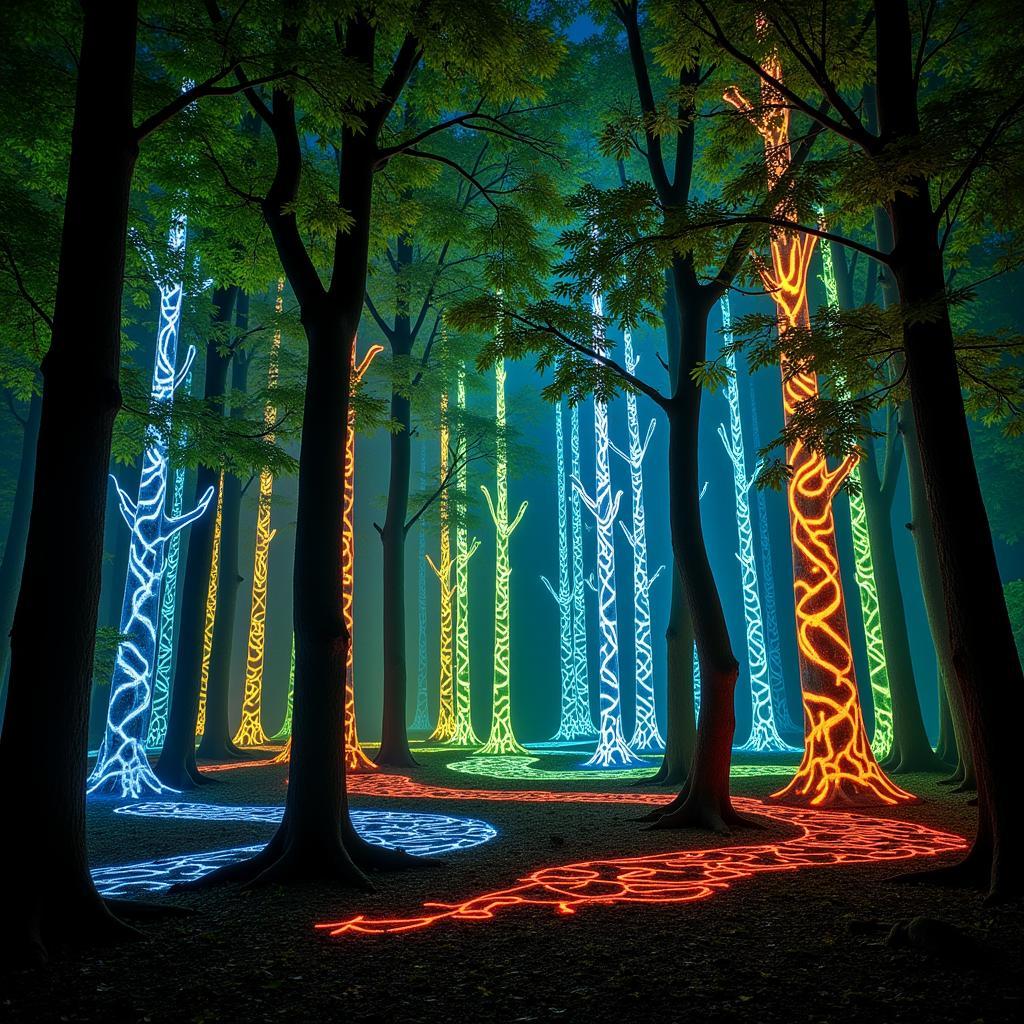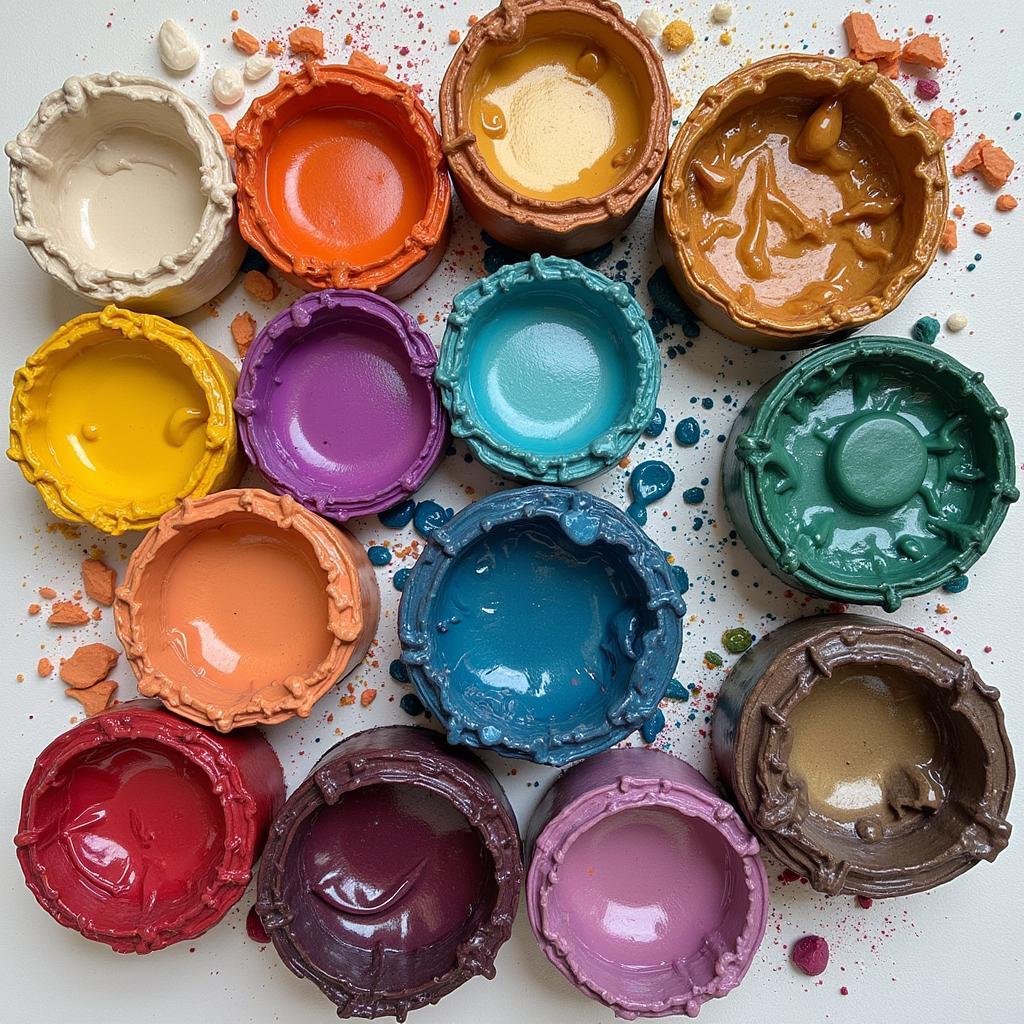Exploring the Nuances of Metamodern Art
Metamodern art represents a fascinating and complex cultural shift, moving beyond the often-cited irony and detachment of postmodernism. It embraces a new sincerity, a yearning for meaning and connection in a world saturated with information and technology. This artistic movement seeks to reconcile seemingly opposing forces: optimism and melancholy, sincerity and irony, construction and deconstruction, exploring the space between these extremes.
One of the core tenets of metamodernism is the oscillation between opposing poles. Think of it as a pendulum swinging between grand narratives and personal experiences, technological advancement and a return to nature. This dynamic tension fuels the creative process, resulting in art that is both deeply personal and universally resonant. Metamodern artists often grapple with themes of identity, community, and the search for meaning in a fragmented world. For example, an artist might create a digital collage incorporating both futuristic imagery and nostalgic elements, reflecting the metamodern tension between progress and tradition. Check out this owl metal wall art, a fascinating example of how traditional motifs can be reimagined in a modern context.
Defining Metamodern Aesthetics
What does metamodern art actually look like? While there’s no single defining aesthetic, certain characteristics often emerge. Metamodern art often features a blend of high and low culture, digital and analog techniques, abstraction and representation. It’s not uncommon to see artists incorporating elements of internet culture, popular music, and everyday life into their work, blurring the lines between art and reality.
Key Characteristics of Metamodern Art
- Oscillation: The constant back-and-forth between opposing ideas.
- Sincerity: A genuine desire to connect with audiences on an emotional level.
- Reconstruction: An attempt to rebuild meaning and create new narratives.
- Technological Engagement: Exploring the impact of technology on our lives and art.
- Informed Naivety: A willingness to embrace both skepticism and hope.
How is Metamodern Art Different from Postmodernism?
While postmodernism deconstructed grand narratives and embraced irony, metamodernism seeks to reconstruct meaning and embrace sincerity. Postmodernism often focused on the fragmentation and instability of meaning, while metamodernism attempts to find new ways to connect and create shared experiences. Think of postmodernism as a deconstruction of existing structures, and metamodernism as an attempt to build something new from the rubble. This doesn’t mean metamodernism rejects irony entirely; rather, it uses irony as a tool for exploration and engagement, not as an end in itself. This modern silver metal wall art showcases a minimalist aesthetic, a distinct departure from the often-elaborate styles associated with postmodernism.
Understanding the Shift from Postmodernism to Metamodernism
The transition from postmodernism to metamodernism can be seen as a response to the changing cultural landscape. The rise of the internet, globalization, and the increasing awareness of social and environmental issues have created a new sense of urgency and interconnectedness. Metamodern artists reflect this shift by grappling with these complex issues in their work.
What are Some Examples of Metamodern Art?
Metamodernism manifests in various art forms, from painting and sculpture to film and music. Artists like Olafur Eliasson, with his large-scale installations that explore the relationship between humans and nature, and musicians like Arcade Fire, with their anthemic songs that blend sincerity and irony, are often cited as examples of metamodern sensibility.
Exploring Metamodern Art in Different Mediums
Metamodernism isn’t confined to a specific medium. It can be found in literature, architecture, and even fashion. This fluidity reflects the interconnected nature of contemporary culture and the blurring of boundaries between different art forms. You might appreciate this intriguing art on tin, a unique medium that reflects the metamodern embrace of diverse materials and techniques.
The Future of Metamodern Art
Where is metamodern art heading? It’s difficult to predict with certainty, but the movement’s emphasis on adaptation and evolution suggests a future of continued experimentation and exploration. As technology continues to evolve and our understanding of the world changes, metamodern artists will likely find new ways to express the complexities of the human condition. The interplay between physical and digital realms will undoubtedly continue to be a significant area of exploration.
Metamodern art offers a rich and nuanced perspective on the contemporary world. By embracing complexity and seeking to reconcile opposing forces, metamodern artists create work that is both challenging and deeply rewarding. This brutalist metal wall art is a powerful example of metamodern aesthetics, blending raw industrial elements with artistic expression.
Conclusion
Metamodern art offers a fresh and relevant perspective in the contemporary art scene. It provides a framework for understanding the complexities of our current cultural moment, marked by a dynamic interplay between seemingly contradictory forces. By embracing both optimism and skepticism, sincerity and irony, metamodern artists are creating a new kind of art that resonates deeply with our experiences in the digital age. Exploring metamodern art allows us to engage with the present while imagining new possibilities for the future. And if you’re looking for a unique piece of metamodern-inspired art, consider this vibrant metal daisy wall art to add a touch of contemporary flair to your space.
Need assistance? Contact us 24/7 at Phone Number: 02462573573, Email: danteum@gmail.com or visit us at Savico Megamall, 7-9 Đ. Nguyễn Văn Linh, Gia Thụy, Long Biên, Hà Nội 10000, Việt Nam.

